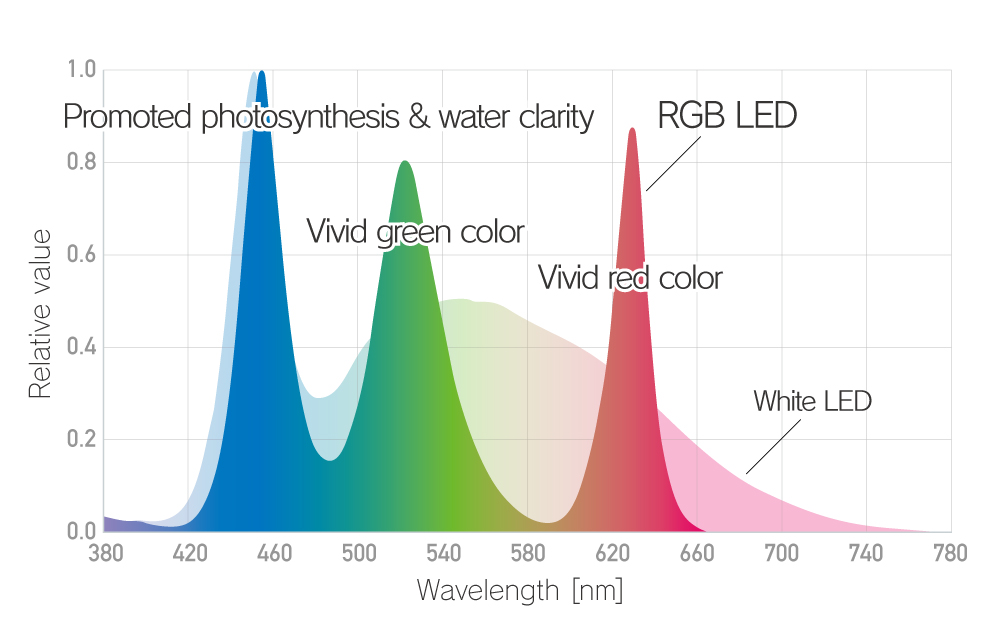The common image people have about stem plants is that these plants grow upward by extending their stems towards the water line. But how stem plants grow varies depending on the environment. The biggest environmental factor is light. Stem plants have a fundamental trait to grow upward towards the water line to seek a brighter environment when it is placed under low light conditions.
In such an environment, the internodes elongate and the leaf area density becomes lower. On the other hand, stem plants extend their stems diagonally upward or sideways as if they are creeping in order to utilize the maximum amount of light. In this case, the internodes become shorter with dense leaves. This behavior is prominent especially in Rotala species. When growing Rotala species for the first time, some aquarists may wonder why the stem is extending sideways instead of growing upwards. This is not a sign of abnormal growth but it actually indicates that the plant is growing healthily. In this case, let the plant grow as it is and provide repeated trimming to achieve denser leaves, and eventually, an attractive thicket will be formed. If Rotala species grows straight upward towards the water line, it can be determined that the light intensity is insufficient.
For the appropriate light intensity for your aquarium size, you may refer to the aquarium data here in this portal
Whether using a T5 or LED, ensuring the brightest environment possible is a crucial point for growing the various sun-loving stem plants. For the lighting system for aquarium use, the light quality is important along with the light intensity. Under general lighting or a lamp for terrestrial plants that emits warm (low color temperature) light, stem plants tend to grow upward just as in the case of a low light condition. Blue light that penetrates well in water is effective for the growth of aquatic plants Under such a light, the plants develop healthy leaves and stems and are free from elongated stems However, the stem plants do not look attractive under blue light only.
As we know, the leaves of many stem plants are in bright green or red, but these colors do not come out beautifully under white light. Hence, the light consisting of higher blue spectrum as well as the balanced ratio of red spectrum is ideal for the lighting system for aquariums. Full Spectrum LED or RGB LED has been developed to emit this ideal type of light. Some people might have the concern that the light consisting of a lower red spectrum (around 660nm) is disadvantageous for the photosynthesis process of plants. As shown in the charts on this page, the plants’ photosynthesis pigments have a major light absorbance peak in the blue spectrum (around 450nm) and it synchronizes with the peak of photosynthesis. Red spectrum is in fact effective for forcing culture of terrestrial plants, but it is not nearly as necessary by aquatic plants that perform photosynthesis underwater. Rather, red spectrum can cause algal growth in the aquarium. so limited Red Spectrum is useful to make stem plants lookk attractive along-with blue Meanwhile, when the aquarium light is made brighter, the amount of C02 to be injected must be controlled accordingly.
